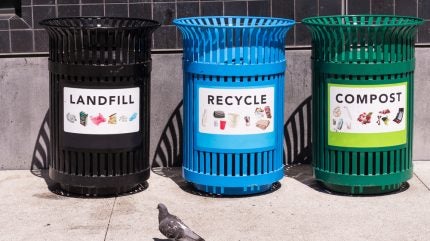
In recent years, sustainability has become a key focus for individuals, businesses, and governments alike. Among the many eco-friendly options, recyclable and compostable materials often emerge as popular choices for reducing waste.
Yet, while both have their merits, the question remains: when does recyclable actually outperform compostable?

Discover B2B Marketing That Performs
Combine business intelligence and editorial excellence to reach engaged professionals across 36 leading media platforms.
The answer lies in understanding the data behind environmental impact, waste management systems, and real-world outcomes rather than assumptions or marketing claims.
This article explores why recyclable materials sometimes provide a better solution than compostable ones, backed by evidence.
By looking at environmental footprints, infrastructure challenges, and consumer behaviour, we’ll see why making informed decisions matters more than simply choosing what sounds greener.
The environmental impact: recyclability versus compostability
At first glance, compostable materials seem like an ideal answer to waste problems. Designed to break down naturally and enrich soil, compostables promise zero landfill residue and minimal pollution.

US Tariffs are shifting - will you react or anticipate?
Don’t let policy changes catch you off guard. Stay proactive with real-time data and expert analysis.
By GlobalDataHowever, the reality is more nuanced. Compostable items, such as certain bioplastics and food packaging, require specific conditions—temperature, humidity, and microbial activity—to decompose properly.
These conditions are rarely met outside industrial composting facilities.
Studies indicate that when compostable materials end up in landfill or general waste streams, they often behave like conventional plastics, taking decades or longer to break down and releasing methane, a potent greenhouse gas.
Meanwhile, recyclable materials, particularly paper, glass, metals, and traditional plastics, can be processed repeatedly into new products without significant loss of quality, preserving resources and reducing emissions.
Data from waste management authorities show that the carbon footprint of recycling paper, aluminium, and glass can be up to 70% lower than producing virgin materials.
In contrast, composting benefits can be offset if compostable waste is contaminated or not processed correctly. This underlines the importance of infrastructure and clear labelling, but also suggests that in many contexts, recycling is currently the more environmentally advantageous option.
Infrastructure and waste management realities
The success of any eco-friendly material depends heavily on the infrastructure in place to handle it. While recycling systems have been established over decades in many countries, industrial-scale composting facilities remain limited and unevenly distributed.
In the UK, for instance, kerbside recycling schemes are widespread, with well-developed networks for collecting and processing paper, cardboard, plastics, and metals. On the other hand, access to commercial composting for bioplastics and compostable packaging is far less common.
Without industrial composting, compostable items often contaminate recycling streams or are diverted to landfill, undermining their benefits.
Moreover, consumer confusion adds to the problem. Surveys repeatedly show that people struggle to distinguish between recyclable, biodegradable, and compostable products.
Misplaced items can cause entire batches of recyclables to be rejected, increasing costs and reducing recycling rates. In contrast, recyclable materials typically have clearer, more universally recognised symbols, which helps improve sorting accuracy.
Therefore, data suggests that prioritising recyclable materials—backed by robust collection and processing infrastructure—offers a more reliable environmental benefit in the current waste landscape.
It also highlights the need for governments and businesses to invest in expanding composting capabilities before promoting compostable products widely.
Consumer behaviour and the role of education
Even the most sustainable packaging fails if consumers do not dispose of it correctly. Behaviour plays a crucial role in determining whether recyclable or compostable materials actually end up being processed as intended.
Research shows that recyclable items, due to their recognisable formats and simpler sorting rules, tend to have higher correct disposal rates among the general public. Compostable products, with more complex requirements, often cause confusion.
For example, a compostable coffee cup lid that looks like plastic but must be industrially composted is frequently discarded in general waste, negating its environmental advantages.
Education campaigns focusing on clear labelling and public awareness have proven effective at increasing recycling rates. Governments and companies can apply similar approaches to compostables, but it will take time to build the same level of familiarity.
Until then, data-driven analysis recommends focusing on recyclable materials for packaging and products whenever possible.
This ensures a higher chance that the environmental benefits will be realised because the current systems and consumer habits support proper recycling far more reliably than composting.
The takeaway
In conclusion, while compostable materials offer exciting possibilities for sustainable waste management, the current evidence strongly supports recyclable materials as a better option in many circumstances.
Environmental impact assessments, existing infrastructure, and consumer behaviour data all point to recycling as the more dependable and scalable solution at present.
Choosing recyclable over compostable is not about dismissing innovation or green alternatives, but about relying on solid data to maximise positive outcomes.
As composting infrastructure improves and awareness grows, the balance may shift. Until then, embracing recyclable materials backed by effective systems remains a pragmatic and responsible choice for a sustainable future.





